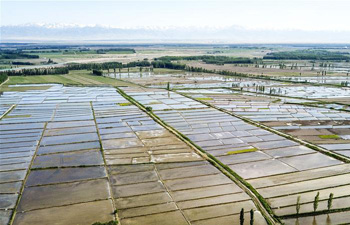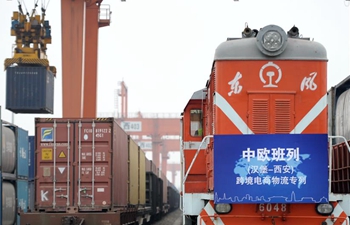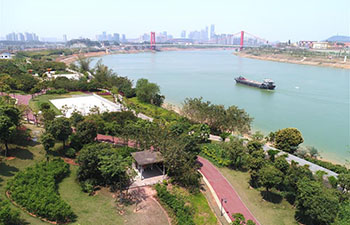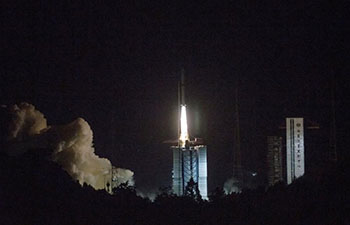BEIJING, May 21 (Xinhua) -- Every year from late April to June, Thailand's fruit of the season, durian, can be delivered to China in just 120 hours through a direct route between the two countries for the delivery of fresh products. Yet thanks to Chinese enterprises' intelligent logistics networks, the delivery time will be possibly shortened to 72 hours in the future.
Chinese logistics enterprises are among the country's growing group of companies, both state-owned and private enterprises, that have been seeking a larger foreign presence to fulfill their global ambitions, and to bring more benefits to the world.
With a long-term financial perspective, Chinese enterprises have speeded up the connection between global producers and consumers, making the country able to move up the global value chain, and creating more opportunities for not only themselves but also the world.
While smart Chinese solutions are upgrading international logistics, big international acquisitions by Chinese companies have captured the global spotlight.
In February, Chinese carmaker Geely became the largest stakeholder of Mercedes-Benz owner Daimler by acquiring 9.69 percent of the German luxury carmaker's stocks for 9.2 billion U.S. dollars, making it the biggest investment in a global automobile manufacturer by a Chinese company.
As more and more Chinese enterprises go global, Western investors have begun to benefit from the Chinese market with its rapid innovation and large scale, said Huang Guobin, head of Global Investment Banking for China at JP Morgan Chase & Co.
Chinese enterprises' foreign presence has entered a new phase, in which they assist overseas investors to achieve higher global growth, Huang said.
Last October, tire maker Pirelli returned to the Milan Stock Exchange,marking the largest initial public offering in the European market in 2017.
The relisting came two years after it was taken over by China National Chemical Corp (ChemChina), which changed Pirelli's business focus to high-end consumer tires and expanded its capacity in China. Thus, the Asia Pacific has become one of the regions in which Pirelli made the most profits in 2017.
This example, Huang said, demonstrated that cross-border acquisitions made by Chinese enterprises can add "Chinese genes" to local companies, which would help the latter grow as international enterprises with strong growth.
As China is accelerating its economic restructuring, more and more startups and new commercial patterns are sprouting up, making the Asian giant climb up the global value chain at a fast speed, according to a recent report by U.S. management consulting firm McKinsey.
According to the World Intellectual Property Report in 2017 with the theme of Intangible Capital in Global Value Chains, China has been at the forefront of the transformation and upgrading of the global value chain, as it is shaking off its label of "the world's factory."
With such a trend, Chinese enterprises have had a profound impact on the global value chain. In 2017, Chinese investors made a new direct non-financial investment in 6,236 overseas enterprises of 174 countries and regions, amounting to 120.08 billion dollars, according to statistics released by China's Ministry of Commerce.
Also in 2017, Chinese business had a total of 341 merger and acquisition projects overseas, with an actual transaction value of 96.2 billion dollars, involving 18 industries over 49 countries and regions.
Besides the dramatic rise, Chinese investments overseas have also expanded. The Belt and Road (B&R) Initiative, proposed by Chinese President Xi Jinping in 2013, has also greatly facilitated the going global of Chinese capital.
In 2017, China's new investment in 59 countries along the B&R route reached up to 14.36 billion dollars, accounting for 12 percent of total volume and increasing by 3.5 percentage points over the same period last year, according to the Ministry of Commerce.
Online international news magazine The Diplomat pointed out in an article published in December 2017, that as Chinese enterprises keep improving their scale, strength and competitiveness, they have the potential to reshape the global value chain, which accounts for approximately two thirds of all global trade.

















